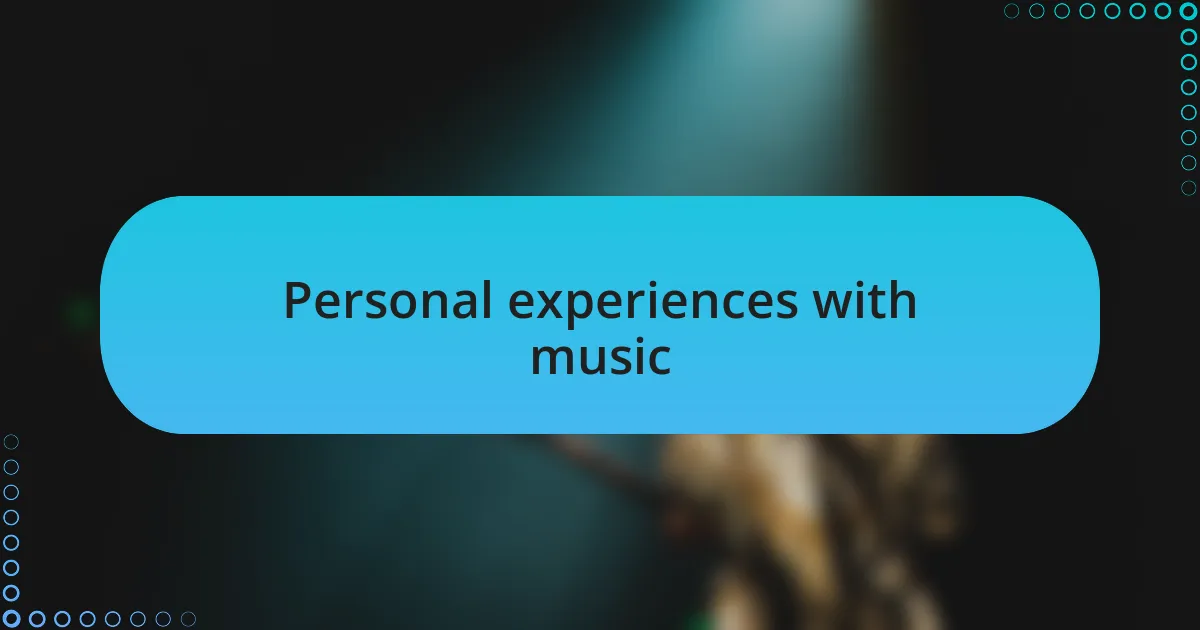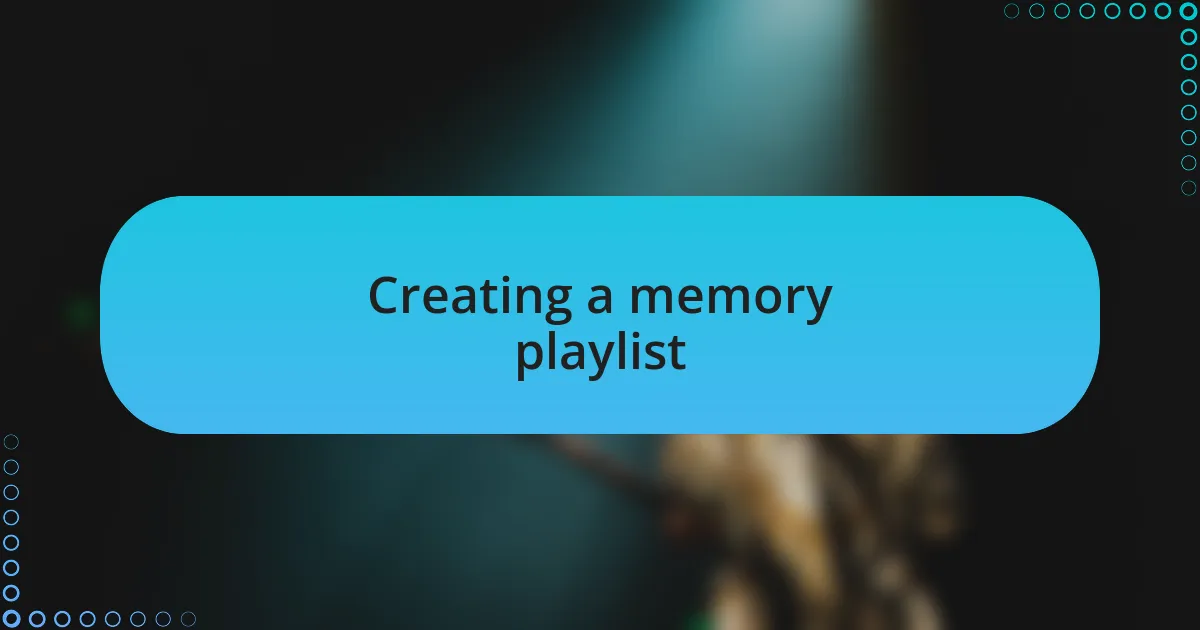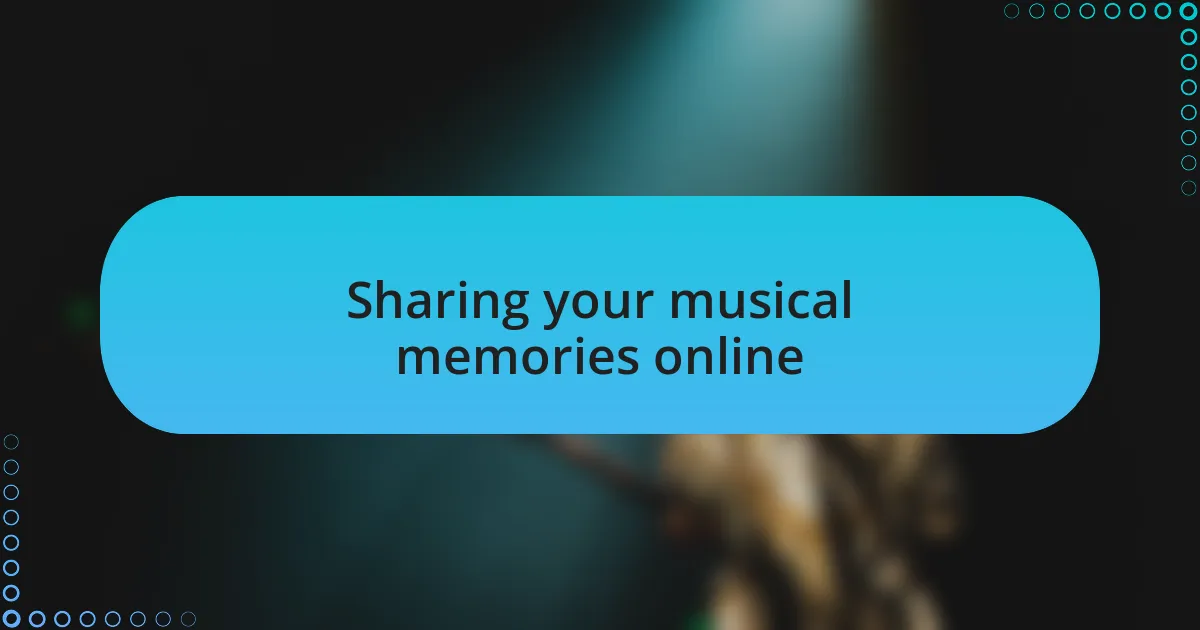Key takeaways:
- Music serves as a powerful connector to memories, evoking strong emotions and transporting individuals back to significant moments in their lives.
- Creating memory playlists allows individuals to encapsulate their personal history, fostering deeper connections and shared experiences with others.
- Sharing musical memories online can create a sense of community, as personal stories resonate with others and highlight the unifying power of music.

Understanding the role of music
Music is a powerful connector to our memories, serving as a soundtrack to significant moments in life. I can recall the exact melody playing during my high school graduation; it felt like an anthem of freedom and new beginnings. Have you ever noticed how a particular song can take you back to a specific place and time?
The role of music transcends mere enjoyment; it can evoke intense emotions and spark vivid recollections. For instance, every time I hear that familiar tune from a childhood family road trip, I can almost feel the warmth of the sun on my face and the laughter of my siblings in the backseat. Isn’t it fascinating how something as simple as a song can transport us back to cherished experiences?
Moreover, music shapes our identities and connects us to our past. I remember discovering an old playlist filled with tracks from my first love; each song was a poignant reminder of those exhilarating and sometimes tumultuous emotions. Don’t you think that the songs from our formative years are like a diary, revealing insights into who we were and how we’ve grown?

How music influences memory
Music has a remarkable ability to anchor our memories. I vividly remember the first time I danced at a friend’s wedding; the song that played felt like an emotional thread weaving through the celebration. Doesn’t it strike you how certain songs can forever tie us to moments like these, almost like our own personal time capsules?
Moreover, specific tunes can evoke strong emotional reactions, triggering memories I thought I had long forgotten. I once stumbled upon a playlist from college, and suddenly, I was transported back to late-night study sessions filled with laughter and camaraderie. Can you recall a time when music took you back to a moment that seemed to leap out of the past?
These experiences show that music doesn’t just accompany memories; it can profoundly shape how we revisit them. Listening to an old song can stir up feelings and images, almost illuminating the corners of our minds where we stashed those memories away. Have you ever felt that surge of nostalgia when a familiar track starts playing? It’s as if the music itself is a key, unlocking the door to a treasure trove of past experiences.

Personal experiences with music
The first time I heard my favorite song as a teenager, it felt like the soundtrack to my life. I remember blast-ing it from my room, singing along during those awkward years of growth and self-discovery. Doesn’t it make you wonder how our teenage years are often punctuated by specific songs that shape our identities?
Years later, during a road trip with friends, we played that same song, triggering a wave of nostalgia. We shared stories about our younger selves, laughing and cringing at our past choices. It was a beautiful moment, reminding me how music can bridge the gap between our present and past experiences.
Recently, I attended a concert of a band I adored in high school. When they played a song from that era, it struck me with an emotional force I didn’t expect. I closed my eyes as memories flooded back—bright summer nights and carefree moments filled with joy. Have you ever had a similar experience at a concert, where a single note transports you back in time?

Creating a memory playlist
Creating a memory playlist is a special endeavor for anyone looking to encapsulate meaningful moments. I recall making one for a birthday celebration, carefully selecting songs that highlighted each year of my life. Each track became a reflection of who I was during that time, and it felt like embarking on a nostalgic journey all over again.
When I shared this playlist with friends, they were not just listening; they were experiencing my history alongside me. I remember one friend tearing up when we reached a song that reminded her of a difficult time we faced together. Isn’t it fascinating how a simple melody can evoke such intense emotions and spark heartfelt conversations?
As I’ve refined my playlist over the years, I learned the importance of pacing and variety. Mixing upbeat tracks with more reflective ones creates a dynamic flow, making it more like a story rather than just a collection of tunes. Have you ever thought about how a thoughtfully crafted playlist can serve not only as entertainment but also as a lasting keepsake of cherished memories?

Sharing your musical memories online
Sharing your musical memories online can be an incredibly rewarding experience. I remember posting a video of a concert I attended years ago, where my favorite band played a song that perfectly captured the spirit of that night. The comments flooded in with friends recounting their own experiences at concerts, creating a vibrant tapestry of shared memories that deepened our connections.
When I take the time to share a story behind a song, the reactions are often overwhelming. One particular post about a song that played during a pivotal moment in my life led to several people reaching out to share their own stories. It made me feel less alone in my experiences. Have you ever considered how your stories could resonate with others, transforming mere tracks into chapters of collective memory?
Utilizing social media platforms to share those cherished tracks and the stories behind them is like opening a window into our past. I once crafted a blog post where I recounted how a certain song helped me through a breakup, and the responses were heartwarming. Readers shared their struggles and triumphs, reminding me of the power music holds to unite us. Isn’t it remarkable how sharing a personal moment can create a community around mutual appreciation and understanding?